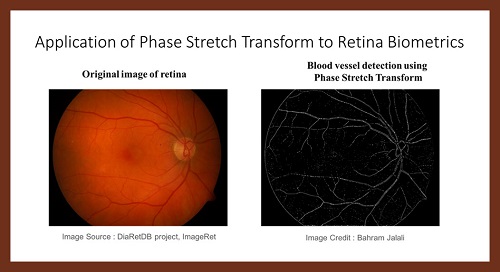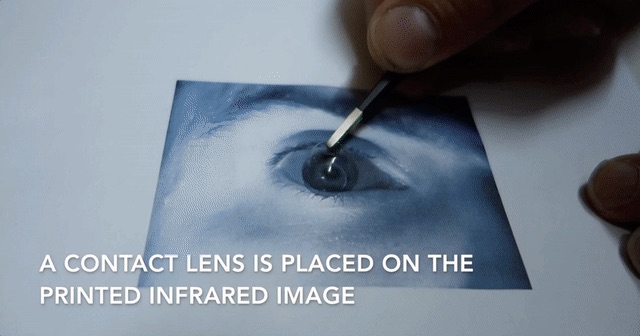Apple renews interest in biometrics: Here’s an algorithm for facial recognition and more
Apple reinvigorated the discussion regarding biometrics with its debut of Face ID, the authentication system that creates a 3D facial map by projecting 30,000 invisible, infrared (IR) dots onto your face. The built-in IR camera then snaps a picture of the dots. The phone processes the image, reportedly using machine learning, to authenticate the user.
In the world of hacked sites and passwords, biometrics promises increased security. Apple has stated that only 1 in 1,000,000 people would have a face similar enough to trick their new system.
Facial scans aren’t the only form of biometrics being used on smartphones. Sensors for fingerprint identification and iris scanning are already in place on some models. But biometric security requires processing the image that is captured by these sensors. Detecting the unique characteristics of the image is key, from fingerprint analysis to iris scans and facial recognition.
UCLA’s image detection algorithm
While Apple won’t be publishing their algorithm for Face ID, a UCLA Engineering research group has shared their algorithm for image detection that can be used for biometrics. It’s called phase stretch transform (PST), and in addition to its use in biometrics, medical and other computer vision applications are under development.
PST is a physics-inspired computational approach to image processing. It performs a mathematical operation that identifies objects’ edges which can be used for object detection and feature extraction. According to UCLA, the algorithm can also enhance images and recognize their textures.
The PST algorithm was developed by Bahram Jalali, UCLA professor and Northrop-Grumman Optoelectronics Chair in electrical engineering and senior researcher Mohammad Asghari. It is inspired by optical physics employed in a technique called photonic time stretch, also developed in the Jalali Lab. Photonic time stretch is a data acquisition technique that has enabled spectrometers and microscopes with the fastest real-time speed to date leading to discoveries of new optical phenomena and milestones in biological cell classification.
By making the code available for download, users can incorporate the technology into computer vision and pattern recognition applications and other image-processing applications. The team is sharing the code to allow researchers to study, use and improve the algorithm. The code is available on MATLAB File Exchange and GitHub.
One company that has accessed the code is Raphta, a start-up focused on fighting financial fraud in South Africa.
“PST is helping us in the fight against identity theft and payment fraud which are one of the biggest problems we face in South Africa and globally,” stated Tshidiso Radinne, CEO and Chief Product Architect, Raphta.
“PST is particularly important to us in improving the accuracy of our facial verification process and countermeasures on various spoofing attacks on biometric systems. We have also narrowed the application of PST in solving the issue of false acceptance rates and false recognition rates and their relationship which have posed the greatest challenge in biometric systems being widely adopted.”
PST image processing boosts computer vision
The PST algorithm helps computers see features of objects that aren’t visible using standard imaging techniques. The team demonstrated how PST detects an LED lamp’s internal structure, which would be obscured by the brightness of its light with conventional image processing techniques.
PST was also used to image distant stars that were invisible in previous astronomical images. Here, edge detection was able to bring out features otherwise too fine to be seen in the image.

Moon images. The left panel shows the original image, and the right panel shows additional stars detected using PST. Image Credit: Bahram Jalali
The image below shows another example of using PST for feature enhancement in a painting of “Minerva of Peace”. The enlarged view of the scroll in the painting shown here in the red boxes shows that PST is able to trace the edges of alphabets in the scroll more accurately.
Biomedical applications
PST has also been used for feature enhancement in biomedical images to develop diagnostic assistant tools for radiologists.
“There are also projects with the UCLA David Geffen School of Medicine where teams are developing PST-based tools for brain imaging, mammograms, and prostate cancer diagnostics,” explained Professor Jalali.

The left panel shows the original image and the right panel shows the detected features using PST. Image Credit: Wikipedia.
To learn more about photonic time stretch, the basis of PST, see my earlier post: This AI-augmented microscope uses deep learning to take on cancer.
 Cleve’s Corner: Cleve Moler on Mathematics and Computing
Cleve’s Corner: Cleve Moler on Mathematics and Computing The MATLAB Blog
The MATLAB Blog Guy on Simulink
Guy on Simulink MATLAB Community
MATLAB Community Artificial Intelligence
Artificial Intelligence Developer Zone
Developer Zone Stuart’s MATLAB Videos
Stuart’s MATLAB Videos Behind the Headlines
Behind the Headlines File Exchange Pick of the Week
File Exchange Pick of the Week Hans on IoT
Hans on IoT Student Lounge
Student Lounge MATLAB ユーザーコミュニティー
MATLAB ユーザーコミュニティー Startups, Accelerators, & Entrepreneurs
Startups, Accelerators, & Entrepreneurs Autonomous Systems
Autonomous Systems Quantitative Finance
Quantitative Finance MATLAB Graphics and App Building
MATLAB Graphics and App Building












Comments
To leave a comment, please click here to sign in to your MathWorks Account or create a new one.